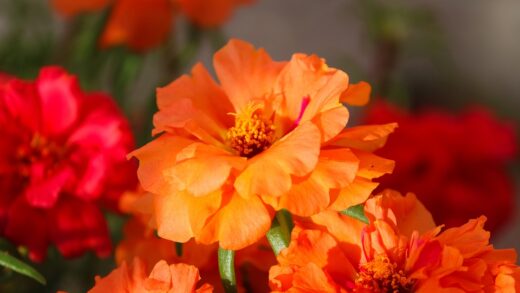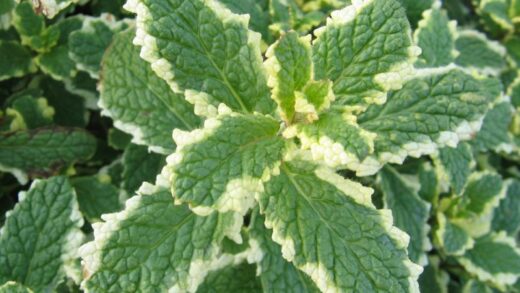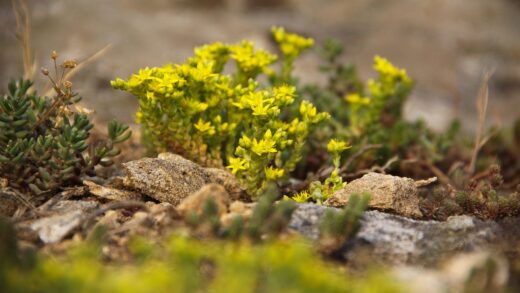Understanding the specific water requirements of the amethyst hyacinth is fundamental to its health and longevity, as improper irrigation is one of the most common reasons for failure with this and many other bulbous plants. The key to success lies in mimicking the moisture patterns of its native alpine environment, which is characterized by a moist spring growing season followed by a significantly drier summer dormancy. This cyclical approach to watering ensures the plant receives the hydration it needs for vigorous growth and flowering, while also providing the necessary dry rest period that is crucial for preventing bulb rot. Mastering this balance is not difficult, but it does require careful observation of both the plant and the prevailing environmental conditions.
During the active growth phase, which begins with the emergence of foliage in early spring and continues through the flowering period, the amethyst hyacinth requires a consistent and reliable supply of moisture. The soil should be kept evenly moist, but it is critically important that it is never allowed to become waterlogged or saturated. A good analogy is to think of a well-wrung-out sponge; the soil should hold moisture, but also plenty of air. Inadequate water during this period can lead to stunted growth, poor flower development, and a premature yellowing of the leaves, which curtails the bulb’s ability to store energy for the following year.
The need for supplemental irrigation during the spring growth phase is highly dependent on your local climate and soil type. In regions with regular spring rainfall, you may not need to provide any extra water at all, especially for bulbs planted in the ground in moisture-retentive, yet well-drained soil. However, during extended dry spells, it is important to check the soil and water deeply when the top inch or two has become dry. A thorough, deep watering that encourages the roots to grow downwards is far more beneficial than frequent, shallow sprinklings which can promote a weak, shallow root system.
For amethyst hyacinths grown in containers, a more vigilant approach to watering is necessary. Pots and troughs, especially terracotta ones, dry out much more rapidly than garden soil due to the limited soil volume and exposure to air on all sides. During the spring growth period, you will likely need to water container-grown plants once or twice a week, depending on the size of the container and the weather. Always check the soil moisture before watering by inserting a finger into the pot. When you do water, do so thoroughly until water begins to run out of the drainage holes at the bottom, and then allow the pot to drain completely, never leaving it to stand in a saucer of water.
The crucial transition to dormancy
One of the most critical moments in the annual watering cycle for the amethyst hyacinth occurs after the plant has finished flowering. As the blooms fade and the leaves begin to show the first signs of turning yellow, this is the plant’s signal that it is preparing to enter its summer dormancy. At this point, it is imperative to begin gradually reducing the amount of water you provide. This change in irrigation mimics the natural drying out of the soil that occurs in its native habitat as spring transitions into summer.
More articles on this topic
Continuing to water heavily as the plant is trying to become dormant can send mixed signals to the bulb and significantly increase the risk of fungal diseases and rot. The foliage needs to wither and dry back naturally, a process which allows the plant to retract all the valuable nutrients from the leaves and store them in the bulb for next year. Excess moisture can delay this process and lead to the development of soft, vulnerable tissues that are an easy target for pathogens. Therefore, as the yellowing of the leaves progresses, taper off your watering until you stop completely once the foliage has fully died back.
For bulbs planted in a mixed border, this can present a challenge, as the other perennials around them may still require regular watering throughout the summer. This is why the initial choice of planting site is so important. Placing amethyst hyacinths in a dedicated rock garden, a gravel bed, or alongside other drought-tolerant Mediterranean plants that also appreciate a dry summer rest is an ideal solution. If they are planted in a border with more water-hungry companions, ensure the soil has been exceptionally well amended for drainage to help mitigate the effects of summer irrigation intended for other plants.
The goal during the summer dormancy period is to keep the soil relatively dry. The bulbs should be allowed to bake in the warm summer soil, which helps to ripen them and encourages the formation of the following year’s flower buds. In most temperate climates, ambient rainfall is usually infrequent enough in summer that it does not pose a problem, provided the drainage is excellent. You should not provide any supplemental water to the area where the bulbs are dormant. The only exception would be in a desert climate or during a truly exceptional and prolonged drought, where a very occasional light watering might be warranted.
Recognizing signs of water stress
Being able to correctly identify the signs of both under- and overwatering is a key skill for any gardener. An underwatered amethyst hyacinth during its spring growth phase will often show signs of wilting, and the tips of its grass-like leaves may begin to turn yellow or brown prematurely. The flower stalks may be shorter than usual, and the flowers themselves might be smaller or may even fail to open properly before withering. If you observe these symptoms and the soil is dry to the touch, a deep and thorough watering is needed to rehydrate the plant and salvage the season’s display.
More articles on this topic
Conversely, the signs of overwatering are often more insidious and can be more damaging in the long run. The most significant danger is bulb rot, which occurs below the soil surface and may not be immediately apparent. Above ground, symptoms can be surprisingly similar to underwatering, such as the yellowing of leaves, but in this case, the leaves may also appear limp and floppy rather than dry and crisp. The base of the plant may feel soft or slimy, and the entire plant might be easily pulled from the soil, revealing a rotten, non-existent root system. By the time these symptoms are obvious, it is often too late to save the bulb.
To avoid these issues, regular monitoring is the best practice. Instead of watering on a fixed schedule, always assess the actual conditions of the soil and the plant. Factors such as temperature, humidity, wind, and the amount of sunlight can all affect how quickly the soil dries out. A week of cool, cloudy weather will require far less irrigation than a week of warm, sunny, and breezy conditions. Developing a habit of physically checking the soil with your finger is the most reliable method to determine if and when water is needed.
It is also important to consider the maturity of the planting. A newly planted bulb in its first year will be more vulnerable to drying out as its root system is not yet fully established. These new plantings may require more careful monitoring than a large, well-established clump that has a more extensive root network capable of seeking out moisture from a larger volume of soil. By paying close attention to these nuances, you can tailor your watering practices to perfectly suit the needs of your amethyst hyacinths at every stage of their life.
The role of soil and drainage
While irrigation practices are a dynamic part of cultivating amethyst hyacinths, the static and foundational element that underpins all water management is the quality of the soil and its drainage capacity. You can have the most carefully managed watering schedule, but if the bulbs are planted in heavy, compacted clay soil that retains water like a sponge, they will inevitably suffer from root and bulb rot. Therefore, the work you do to prepare the soil before planting is the single most important factor in preventing water-related problems.
Ideal soil for Brimeura amethystina is porous and drains rapidly, yet contains enough organic matter to retain a reserve of moisture for the roots to access during the growing season. A sandy loam or a gritty, gravelly soil is the perfect medium. When water is applied, it should percolate down through the soil profile quickly, rather than pooling on the surface. This ensures that the bulb and its roots are never sitting in stagnant water, and that the air spaces within the soil, which are essential for root respiration, are preserved.
For gardeners whose native soil is less than ideal, creating raised beds or rockeries can be an excellent solution. By building the planting area up above the surrounding ground level, you can have complete control over the growing medium. You can fill the raised bed with a custom blend of topsoil, compost, and a generous amount of grit or pea gravel to create the perfect well-drained environment. This elevated position naturally enhances drainage, as excess water has a clear path to exit the root zone.
The use of mulches can also play a role in water management, although it must be approached with care. A top-dressing of a non-organic mulch like fine gravel or slate chippings can be very beneficial for amethyst hyacinths. This type of mulch helps to keep the soil surface cool and conserves moisture during the spring, suppresses weed growth, and, most importantly, it keeps the base of the plant and the soil surface dry, which helps to prevent rot. Unlike organic mulches like bark, which can hold too much moisture against the plant’s crown, a mineral mulch provides a dry, clean finish to the planting.
Special considerations for container cultivation
Growing amethyst hyacinths in pots and containers offers a wonderful way to enjoy their beauty up close, but it requires a more attentive approach to watering compared to growing them in the ground. The limited volume of soil in a container can dry out very quickly, especially on warm or windy days. It is therefore essential to monitor the moisture level of the compost regularly during the spring growing season, often daily in warm weather, and to water thoroughly whenever the top inch becomes dry.
The choice of container and growing medium is critical for success. Ensure that any pot you use has ample drainage holes at the bottom. A layer of crocks or coarse gravel at the base of the pot is a traditional practice, but it is more effective to ensure the entire compost mix is free-draining. A superb potting mix can be created by blending a good quality, loam-based compost (such as a John Innes No. 2) with an equal volume of horticultural grit or perlite. This mixture provides stability and nutrients while guaranteeing the sharp drainage that the bulbs demand.
During the summer dormancy period, the management of container-grown bulbs is straightforward but crucial. Once the foliage has died back, move the pot to a location where it will be sheltered from excessive summer rainfall. Placing it against a sunny wall under the eaves of the house is often an ideal spot. The goal is to allow the compost to dry out completely and for the bulbs to get a good summer baking. This dry rest is absolutely vital for the health of the bulbs and for the initiation of next year’s flower buds.
Come autumn, you can begin to think about reintroducing water. If the pot has been kept completely dry over the summer, a single, thorough watering in mid-autumn is usually sufficient to rehydrate the compost and signal to the bulbs that it is time to start developing their new root systems. After this initial watering, the pot can be left in a spot where it will receive natural rainfall through the winter. The combination of cool temperatures and winter moisture will prepare the bulbs for their spectacular emergence and flowering in the spring.


















